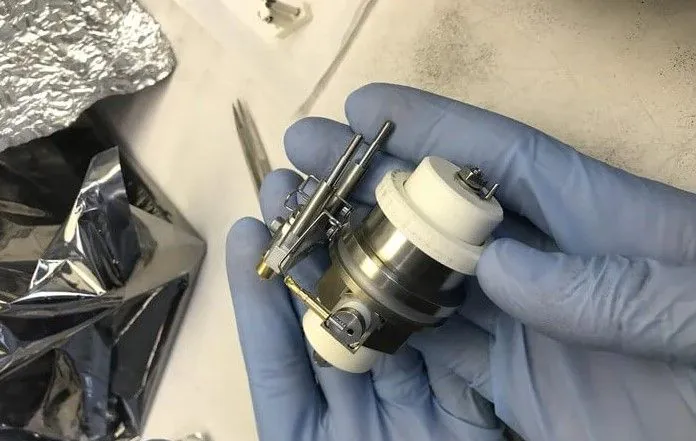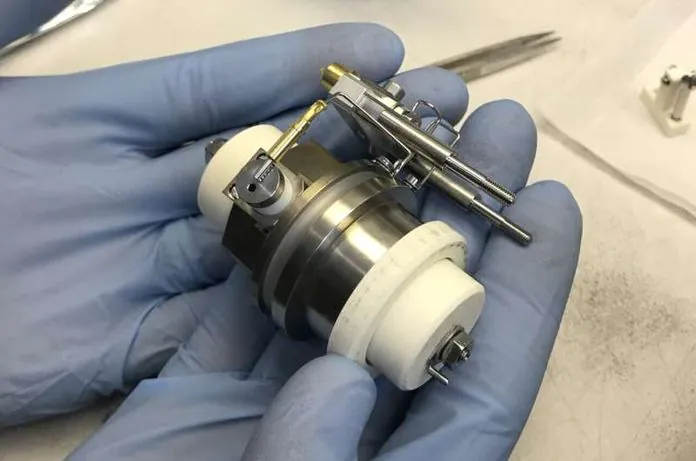© ROOT-NATION.com - Use of content is permitted with a backlink.
As space missions move deeper into the outer solar system, the need for compact, resource-efficient, and accurate analytical tools becomes more critical. Especially since scientists continue to hunt for extraterrestrial life and habitable planets or moons.
A team from the University of Maryland has developed a new tool specifically tailored to the needs of NASA’s space missions. Their laser-based minianalyzer is significantly smaller, yet resource-efficient, without compromising the quality of its ability to analyze samples of planetary material and potential biological activity in situ.

The instrument weighs less than 8 kg and is a physically reduced combination of two important tools for detecting signs of life and determining the composition of materials: a pulsed ultraviolet laser, which removes small amounts of material from a planetary sample, and the Orbitrap analyzer, which delivers data on the chemical composition of the studied materials from high resolution.
“Orbitrap was originally built for commercial use,” explained lead researcher Ricardo Arevalo. – You can find them in medical and pharmaceutical laboratories. The one in my own lab weighs over 180kg, so it’s pretty big, and it took us 8 years to make a prototype that could be used effectively in space. It is much smaller and less resource-intensive.”
The new device scales down the original Orbitrap by combining it with Laser Desorption Mass Spectrometry (LDMS), a technology that has not yet been used in an extraterrestrial planetary environment. The instrument has the same advantages as its larger predecessors, but is simplified for space exploration and in-situ analysis of planetary materials.

Due to its low weight and minimal power requirements, it can be stored and maintained on board space missions, and the analysis of the surface of a planet or material will be less intrusive and thus much less likely to contaminate or damage the sample. “The good thing is that anything that can be ionized can be analyzed. If we direct a laser beam at a sample of ice, we will determine its composition and see biosignatures, – said Ricardo Arevalo. – This instrument has high mass resolution and accuracy.
The laser component of the mini version of the LDMS Orbitrap also allows researchers to access larger and more complex compounds. Smaller organic compounds like amino acids, for example, are ambiguous markers of life forms. “Amino acids can be produced abiotically, which means they are not necessarily proof of life. Meteorites, many of which are rich in amino acids, could fall to the planet’s surface and deliver abiotic organics to the surface, Arevalo said. – The laser allows us to study larger and more complex organic substances that can display the most likely biosignatures.

The LDMS Orbitrap minisystem will be useful in future missions aimed at detecting life (such as the Enceladus Orbilander) or exploring the surface of the Moon (NASA’s Artemis program). The scientists hope to send their device into space and deploy it at the facility within the next few years. “I see this prototype as a precursor to other future instruments based on LDMS and Orbitrap,” Arevalo said. “Our Orbitrap LDMS mini-instrument has the potential to significantly improve the way we study planetary surface geochemistry and astrobiology.”
Read also:
- All news and articles about space exploration
- Ukrainian space startup to develop equipment for military needs
- Twitter in Elon Musk’s Hands — A Threat or an “Improvement”?


